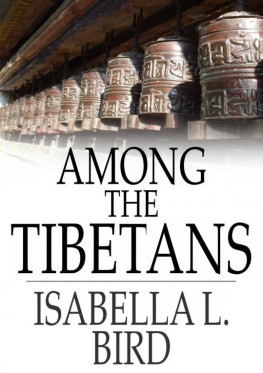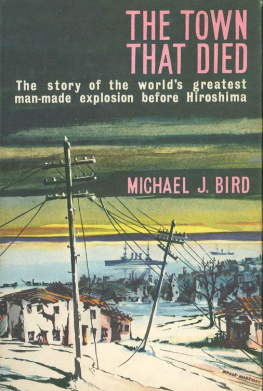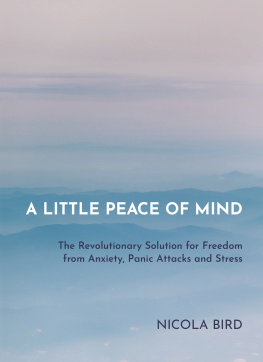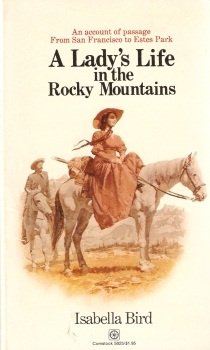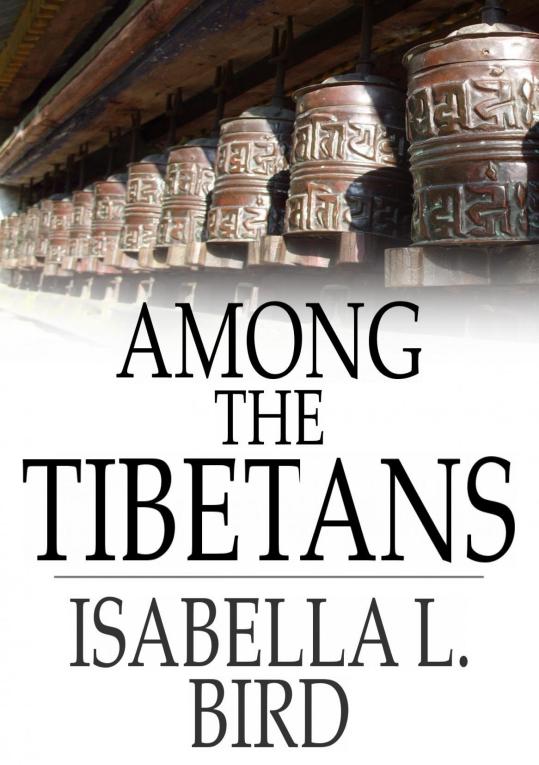AMONG THE TIBETANS
* * *
ISABELLA L. BIRD

*
Among the Tibetans
From a 1894 edition.
ISBN 978-1-877527-57-9
2009 THE FLOATING PRESS.
While every effort has been used to ensure the accuracy and reliability of the information contained in The Floating Press edition of this book, The Floating Press does not assume liability or responsibility for any errors or omissions in this book. The Floating Press does not accept responsibility for loss suffered as a result of reliance upon the accuracy or currency of information contained in this book. Do not use while operating a motor vehicle or heavy equipment. Many suitcases look alike.
Visit www.thefloatingpress.com
Contents
*
Chapter I - The Start
*
The Vale of Kashmir is too well known to require description. It isthe 'happy hunting-ground' of the Anglo-Indian sportsman and tourist,the resort of artists and invalids, the home of pashm shawls andexquisitely embroidered fabrics, and the land of Lalla Rookh. Itsinhabitants, chiefly Moslems, infamously governed by Hindus, are afeeble race, attracting little interest, valuable to travellers as'coolies' or porters, and repulsive to them from the mingled cunningand obsequiousness which have been fostered by ages of oppression.But even for them there is the dawn of hope, for the ChurchMissionary Society has a strong medical and educational mission atthe capital, a hospital and dispensary under the charge of a ladyM.D. have been opened for women, and a capable and upright'settlement officer,' lent by the Indian Government, is investigatingthe iniquitous land arrangements with a view to a just settlement.
I left the Panjab railroad system at Rawul Pindi, bought my campequipage, and travelled through the grand ravines which lead toKashmir or the Jhelum Valley by hill-cart, on horseback, and byhouse-boat, reaching Srinagar at the end of April, when the velvetlawns were at their greenest, and the foliage was at its freshest,and the deodar-skirted mountains which enclose this fairest gem ofthe Himalayas still wore their winter mantle of unsullied snow.Making Srinagar my headquarters, I spent two months in travelling inKashmir, half the time in a native house-boat on the Jhelum and Pohrurivers, and the other half on horseback, camping wherever the scenerywas most attractive.
By the middle of June mosquitos were rampant, the grass was tawny, abrown dust haze hung over the valley, the camp-fires of a multitudeglared through the hot nights and misty moonlight of the Munshibagh,English tents dotted the landscape, there was no mountain, valley, orplateau, however remote, free from the clatter of English voices andthe trained servility of Hindu servants, and even Sonamarg, at analtitude of 8,000 feet and rough of access, had capitulated to lawn-tennis. To a traveller this Anglo-Indian hubbub was intolerable, andI left Srinagar and many kind friends on June 20 for the upliftedplateaux of Lesser Tibet. My party consisted of myself, a thoroughlycompetent servant and passable interpreter, Hassan Khan, a Panjabi; aseis, of whom the less that is said the better; and Mando, a Kashmirilad, a common coolie, who, under Hassan Khan's training, developedinto an efficient travelling servant, and later into a smartkhitmatgar.
Gyalpo, my horse, must not be forgottenindeed, he cannot be, for heleft the marks of his heels or teeth on every one. He was abeautiful creature, Badakshani bred, of Arab blood, a silver-grey, aslight as a greyhound and as strong as a cart-horse. He was higher inthe scale of intellect than any horse of my acquaintance. Hiscleverness at times suggested reasoning power, and hismischievousness a sense of humour. He walked five miles an hour,jumped like a deer, climbed like a yak, was strong and steady inperilous fords, tireless, hardy, hungry, frolicked along ledges ofprecipices and over crevassed glaciers, was absolutely fearless, andhis slender legs and the use he made of them were the marvel of all.He was an enigma to the end. He was quite untamable, rejected alldainties with indignation, swung his heels into people's faces whenthey went near him, ran at them with his teeth, seized unwarypassers-by by their kamar bands, and shook them as a dog shakes arat, would let no one go near him but Mando, for whom he formed atfirst sight a most singular attachment, but kicked and struck withhis forefeet, his eyes all the time dancing with fun, so that onecould never decide whether his ceaseless pranks were play or vice.He was always tethered in front of my tent with a rope twenty feetlong, which left him practically free; he was as good as a watchdog,and his antics and enigmatical savagery were the life and terror ofthe camp. I was never weary of watching him, the curves of his formwere so exquisite, his movements so lithe and rapid, his small headand restless little ears so full of life and expression, thevariations in his manner so frequent, one moment savagely attackingsome unwary stranger with a scream of rage, the next laying hislovely head against Mando's cheek with a soft cooing sound and achildlike gentleness. When he was attacking anybody or frolicking,his movements and beauty can only be described by a phrase of theApostle James, 'the grace of the fashion of it.' Colonel Durand, ofGilgit celebrity, to whom I am indebted for many other kindnesses,gave him to me in exchange for a cowardly, heavy Yarkand horse, andhad previously vainly tried to tame him. His wild eyes were likethose of a seagull. He had no kinship with humanity.
In addition, I had as escort an Afghan or Pathan, a soldier of theMaharajah's irregular force of foreign mercenaries, who had been sentto meet me when I entered Kashmir. This man, Usman Shah, was a stageruffian in appearance. He wore a turban of prodigious heightornamented with poppies or birds' feathers, loved fantastic coloursand ceaseless change of raiment, walked in front of me carrying a bigsword over his shoulder, plundered and beat the people, terrified thewomen, and was eventually recognised at Leh as a murderer, and asgreat a ruffian in reality as he was in appearance. An attendant ofthis kind is a mistake. The brutality and rapacity he exercisesnaturally make the people cowardly or surly, and disinclined to trusta traveller so accompanied.
Finally, I had a Cabul tent, 7 ft. 6 in. by 8 ft. 6 in., weighing,with poles and iron pins, 75 lbs., a trestle bed and cork mattress, afolding table and chair, and an Indian dhurrie as a carpet.
My servants had a tent 5 ft. 6 in. square, weighing only 10 lbs.,which served as a shelter tent for me during the noonday halt. Akettle, copper pot, and frying pan, a few enamelled iron tableequipments, bedding, clothing, working and sketching materials,completed my outfit. The servants carried wadded quilts for beds andbedding, and their own cooking utensils, unwillingness to use thosebelonging to a Christian being nearly the last rag of religion whichthey retained. The only stores I carried were tea, a quantity ofEdwards' desiccated soup, and a little saccharin. The 'house,'furniture, clothing, &c., were a light load for three mules, engagedat a shilling a day each, including the muleteer. Sheep, coarseflour, milk, and barley were procurable at very moderate prices onthe road.
Leh, the capital of Ladakh or Lesser Tibet, is nineteen marches fromSrinagar, but I occupied twenty-six days on the journey, and made thefirst 'march' by water, taking my house-boat to Ganderbal, a fewhours from Srinagar, via the Mar Nullah and Anchar Lake. Never hadthis Venice of the Himalayas, with a broad rushing river for its highstreet and winding canals for its back streets, looked soentrancingly beautiful as in the slant sunshine of the late Juneafternoon. The light fell brightly on the river at the Residencystairs where I embarked, on perindas and state barges, with theirpainted arabesques, gay canopies, and 'banks' of thirty and fortycrimson-clad, blue-turbaned, paddling men; on the gay facade andgold-domed temple of the Maharajah's Palace, on the massive deodarbridges which for centuries have defied decay and the fierce flood ofthe Jhelum, and on the quaintly picturesque wooden architecture andcarved brown lattice fronts of the houses along the swirlingwaterway, and glanced mirthfully through the dense leafage of thesuperb planes which overhang the dark-green water. But the mercurywas 92 degrees in the shade and the sun-blaze terrific, and it was arelief when the boat swung round a corner, and left the stir of thebroad, rapid Jhelum for a still, narrow, and sharply winding canal,which intersects a part of Srinagar lying between the Jhelum and thehill-crowning fort of Hari Parbat. There the shadows were deep, andchance lights alone fell on the red dresses of the women at theghats, and on the shaven, shiny heads of hundreds of amphibious boyswho were swimming and aquatically romping in the canal, which is atonce the sewer and the water supply of the district.

